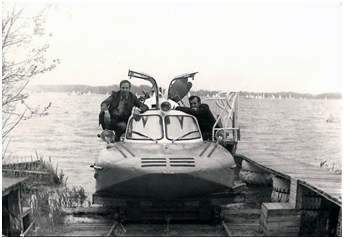
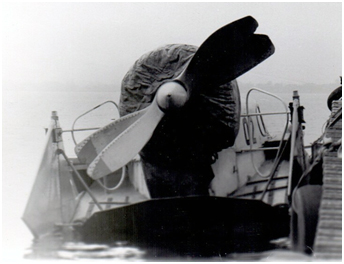 The use of airboats by the 16.VA is a largely unknown subject because to our knowledge, in addition to their very small number in service,
no information had so far filtered down as to their specific use.
The use of airboats by the 16.VA is a largely unknown subject because to our knowledge, in addition to their very small number in service,
no information had so far filtered down as to their specific use.
Presence of one (maybe two) of these airboats is proven during the years 1980s-1990s in Rechlin where the headquarters of the 125.ADIB was located - but there probably
is no relationship to that unit. Also, another vehicle was stationed on the territory of Damgarten airbase during the same time frame.
They were Tupolev A-3 Aerosani Amfibiya (amphibious air sled - commonly called aerosledge in English) capable of moving on water, grass and snow.
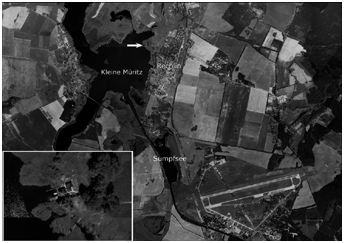
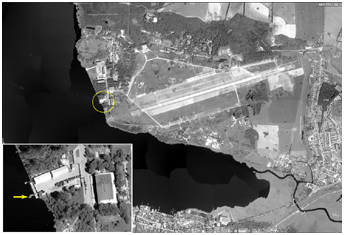 On the left side of the cockpit, the external platform lined with folding metal tubes acting as a guardrail indicates
that the aerosledges were A-3PS rescue versions (PS for Poyskovo Spasatel'nyy, search and rescue).
This platform was intended to facilitate the recovery of people in distress. Given the nature of their mission,
such vehicles had various means of communication, including with aircraft. For example, there was a VHF antenna
on the cabin roof of Rechlin-based A-3PS.
The aerosledges in service with the 16.VA were part of a production batch dating from the eighties. It was indeed possible to distinguish the latter
from older A-3s thanks to the shape of the bottom of the hull almost flat at the level of the nose, whereas originally, it resembled a well-marked V.
This version was powered by a more powerful 350 hp M-14B radial engine (260 hp for the AI-14RS of the previous version) fitted with two small diameter propellers.
The maximum speed on water was 76 km/h, 60 km/h on grass, while it could reach 100 km/h on snow.
On the left side of the cockpit, the external platform lined with folding metal tubes acting as a guardrail indicates
that the aerosledges were A-3PS rescue versions (PS for Poyskovo Spasatel'nyy, search and rescue).
This platform was intended to facilitate the recovery of people in distress. Given the nature of their mission,
such vehicles had various means of communication, including with aircraft. For example, there was a VHF antenna
on the cabin roof of Rechlin-based A-3PS.
The aerosledges in service with the 16.VA were part of a production batch dating from the eighties. It was indeed possible to distinguish the latter
from older A-3s thanks to the shape of the bottom of the hull almost flat at the level of the nose, whereas originally, it resembled a well-marked V.
This version was powered by a more powerful 350 hp M-14B radial engine (260 hp for the AI-14RS of the previous version) fitted with two small diameter propellers.
The maximum speed on water was 76 km/h, 60 km/h on grass, while it could reach 100 km/h on snow.
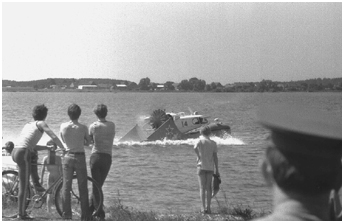
 Des parachutistes ayant sauté d'un An-2 qui a décollé de Lärz atterrissent dans le lac de Müritz. © Y.Rodine.
Des parachutistes ayant sauté d'un An-2 qui a décollé de Lärz atterrissent dans le lac de Müritz. © Y.Rodine.
Parachutists who jumped from an An-2 that took off from Lärz land in the Lake Müritz. © Y.Rodin.
At Rechlin, that vehicle was based on the eastern shore of the Kleine Müritz Lake;
a small cart mounted on rails was used to bring them back to shore.
Damgarten's pre-war infrastructure included two seaplane ramps giving access to the Ribnitzer See located west of the airfield.
A jetty had been set up at the end of the south ramp and this is where the aerosledge was parked. A concrete shelter was built there apparently in the mid-1980s.
But why were A-3PS deployed in the GDR?
The western runway threshold at Damgarten was close to the Ribnitzer-See. It is likely that Search And Rescue means were considered necessary
in the event of a crash after take-off. Also, Lake Müritz north of the smaller Kleine
Müritz, has an area of 117 km²; it is possible that the risk of a plane crashing there was considered high - Lärz airbase was very close.
An out-of-control Tu-143 Reis reconnaissance drone is known to have crashed there in 1986 and it probably still lies there on the bottom.
Another reason confirmed by a testimony was the recovery of pilots parachuting into water as part of their annual training which included
two jumps. It is clear that the risk of having to eject over water was higher in Lärz and Damgarten than in other bases.
Thus, the A-3PS would have been assigned to the "airborne service" (PDS - Parashyoutno-Desantnaya Slujba) (1)
of the regiments concerned. This service was also responsible for SAR operations.
Pilots from Lärz practiced parachute jumps in the Kleine Müritz unless it was in the Sumpfsee near Lärz and connected to the Kleine Müritz by a canal.
Finally, it would appear that these airboats were also used for unauthorized recreational purposes like fishing at Damgarten... The one from Lärz was evacuated by Antonov An-12 in 1993.
notes
(1) Each regiment had such a service. The flight crew had to make two parachute jumps during the year, eject when on the simulator, and undergo a series of training sessions (leaving the aircraft, splashing down and landing under various conditions by parachute). The PDS was composed of its Chief, 2-3 parachute packers and freelance sports parachutists. The pilots, as a rule, were afraid to jump, so the regiment made the aforementioned comrades answerable; for them it was a joy, since money was paid for each jump. In addition to training flight personnel, the PDS was responsible for conducting search and rescue operations in the event of a disaster or aircraft accident.
 |
Plan du site - Sitemap |  |
